SWT/KWS MARA MOBILE VETERINARY UNIT NOVEMBER


2022






November marked the arrival of the short rains within the Mara ecosystem just like most parts of Kenya. Although the rains were not very heavy when they began, it is expected that they will alleviate the forage and water scarcity which has been experienced in the months preceding the rainy season. Cases of humanwildlife conflict are expected to subside as resources become abundant and wild animals withdraw from human dominated areas. The Mara Mobile Veterinary Unit attended to 9 cases in November, 3 of these cases involved elephants, 4 cases involved zebras and 2 cases involved giraffes 7 cases in total involved snared or speared animals, and only 2 cases were attributed to natural causes.
The Mara Mobile Veterinary Unit greatly appreciate the mammoth support received from Elizabeth Scarlet through the Sheldrick Wildlife Trust. Additionally, the team would also like to thank all the conservation partners within the ecosystem who have contributed to the success of veterinary interventions in one way or another.
Date
07-Nov 22
Species Area Found
Zebra Mara Triangle Snared
07-Nov 22 Zebra Mara Triangle Snared
Reason for Intervention Outcome
Adult male zebra seen with a wire snare around the neck. Successfully treated.
Sub-adult male zebra seen with a snare around the left hind fetlock. Successfully treated.
07-Nov 22 Zebra Mara Triangle Snared Adult female zebra seen with a snare around the neck. Successfully treated.
08-Nov 22 Elephant Olare Orok Motorogi HWC Lone male elephant calf with a purulent wound on the right rump Treated & rescued.
10-Nov 22 Giraffe
South Siana Conservancy Natural Causes
Adult male giraffe with lameness on the right front limb
11-Nov 22 Zebra Maasai Mara N.R. HWC Hind legs entangled in fence wire causing lameness and friction wounds
22-Nov 22 Elephant Nyakweri Forest Natural Causes
23-Nov 22 Giraffe Nyakweri Forest Spear

24-Nov 22
Elephant Maasai Mara Conservancy Snared
Adult male elephant with a swollen left forelimb
Adult male giraffe with a spear lodged in its right paravertebral fossa
Sub-adult female elephant with a swollen left forelimb
Successfully treated.
Successfully treated.
Successfully treated.
Successfully treated.
Successfully treated.

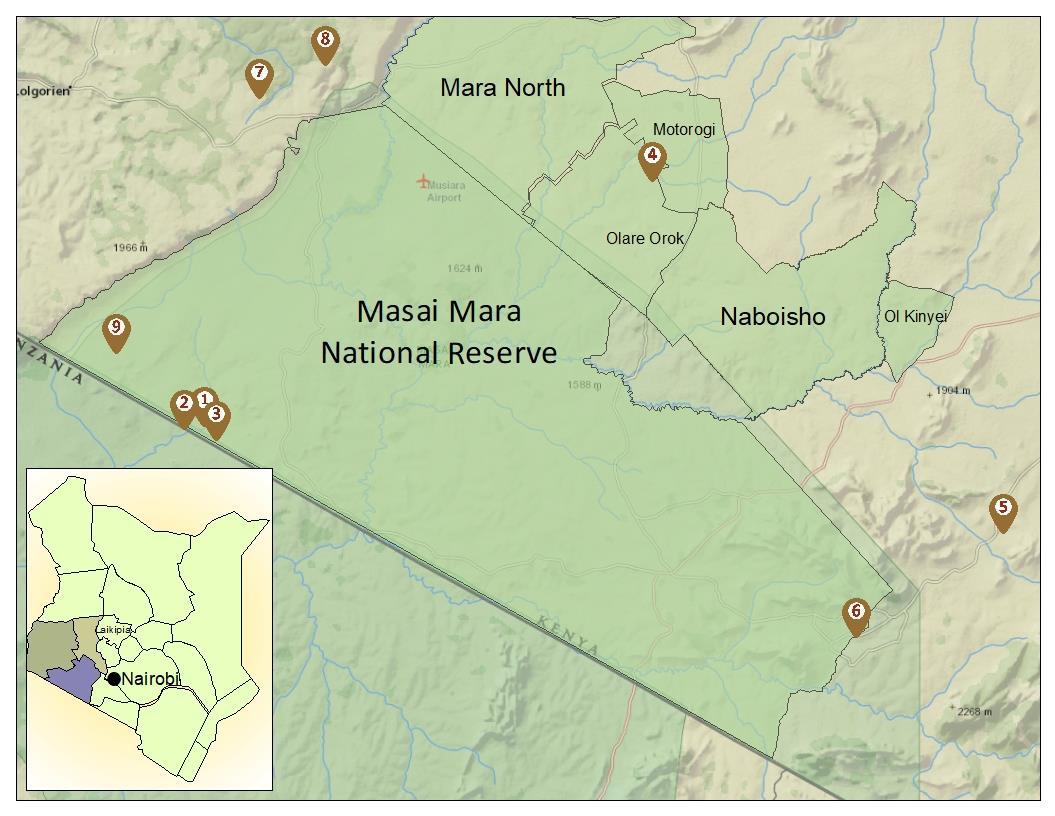

KILO 2 Rangers reported the 1st case of a zebra stallion with a snare around the neck. While searching for the snared stallion along the Mara Triangle – Serengeti border, the Veterinary Unit came across a sub-adult male zebra and an adult female zebra snared at the fetlock and neck respectively.




Each adult zebra was darted with 6 mgs Etorphine and 70 mgs Azaperone while the sub-adult zebra was darted with 2 mgs Etorphine and 35 mgs Azaperone. Once the zebras were fully sedated, they were blindfolded and de-snared. The snare around the neck of the female zebra had not caused a traumatic wound hence no further treatment was necessary. The adult male with a snare around the neck and the sub -adult male with a snare around the left hind fetlock both had traumatic septic snare wounds with resultant necrotic debris. The wounds were cleaned with Hydrogen peroxide and Iodine then Iodinated green clay was smeared onto the wounds and Tetracycline wound spray was applied topically Antibiotics, antiinflammatories, and multi-vitamins were administered accordingly then each animal was revived with Diprenorphine administered intravenously. The average time for full anaesthesia reversal was 2 minutes.
All the zebras have a good prognosis.
Conservancy
The elephant was found grazing alone. It was darted on the right rump with 5 mgs Etorphine. The calf was fully immobilized in left lateral recumbency 8 minutes later No foreign material was found in the wound. The septic wound was thoroughly cleaned with Hydrogen peroxide and Iodine, Tetracycline wound powder was then infiltrated into the wound followed by Iodinated green clay. The wound was sprayed with Tetracycline wound spray then 5,000 mgs Tetracycline and 15 mls Catosal were injected intramuscularly. Anaesthesia was reversed with 15 mg Diprenorphine hydrochloride injected into the jugular vein. The calf rose 3 minutes post-reversal

Given that there was a pride of 19 lions nearby, without protection from an elephant family the injured calf would not survive. The calf was therefore rescued and flown to the SWT Nairobi Nursery for further care and rehabilitation.



Lopoi rangers reported this male Maasai Giraffe with lameness on the right front limb to the Mara Veterinary Unit and the local KWS Station – Nginyeji. The giraffe had a septic wound at the fetlock area suspected to have been caused by blunt trauma such as hitting the limb against a rock, stump, or any other hard surface.
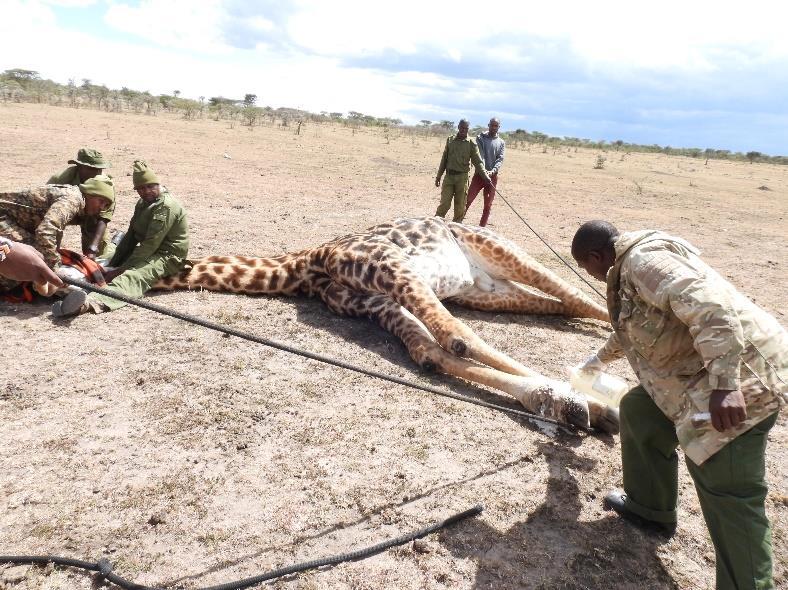
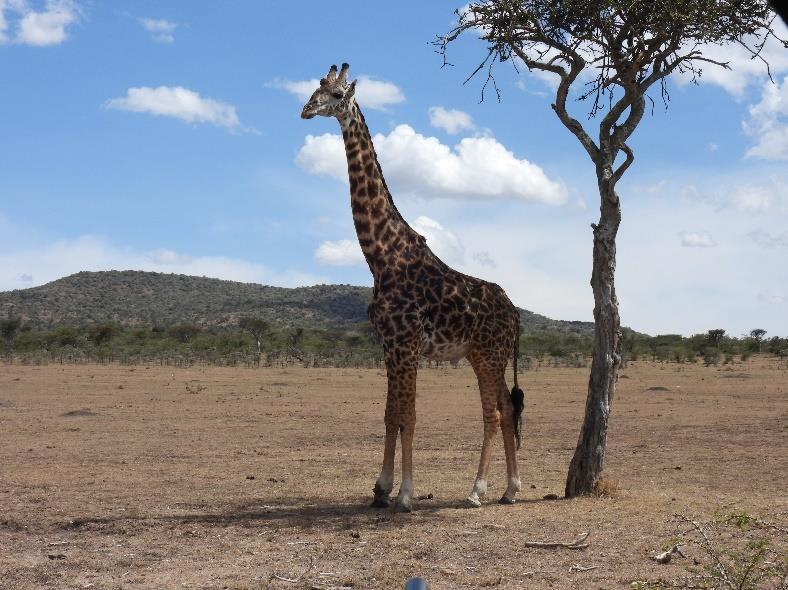


The giraffe was darted from a vehicle with 16 mgs Etorphine and 25 mgs Azaperone, the dart landed on the left rump startling the animal as it walked away The giraffe was herded to open savannah and roped down when the drugs took effect 7 minutes post-darting. It went down on right lateral recumbency whereupon it was blindfolded and manually restrained by pinning the head down then anaesthesia was reversed with 36 mgs Diprenorphine injected via the jugular vein The necrotic wound was disinfected with Hydrogen Peroxide and Iodine causing maggots to resurface and fall off. The wound was laced with 200 mgs Ivermectin to kill any remaining maggot, a similar dose was injected subcutaneously then the wound was sprayed with Tetracycline and smeared with wet green clay. 20,000 mgs Tetracycline and 50 ml Cyanocobalamin were also injected intramuscularly.
The giraffe has a good prognosis since it is expected to heal completely
The head of Security in Maasai Mara National Reserve spotted this adult male common zebra that had its hind legs entangled in fence wire causing lameness and friction wounds on the left hind limb fetlock area.
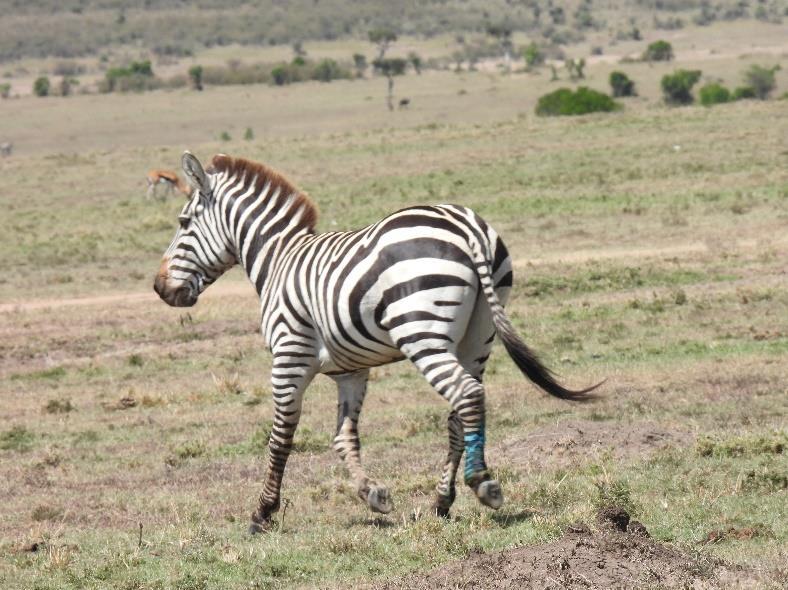
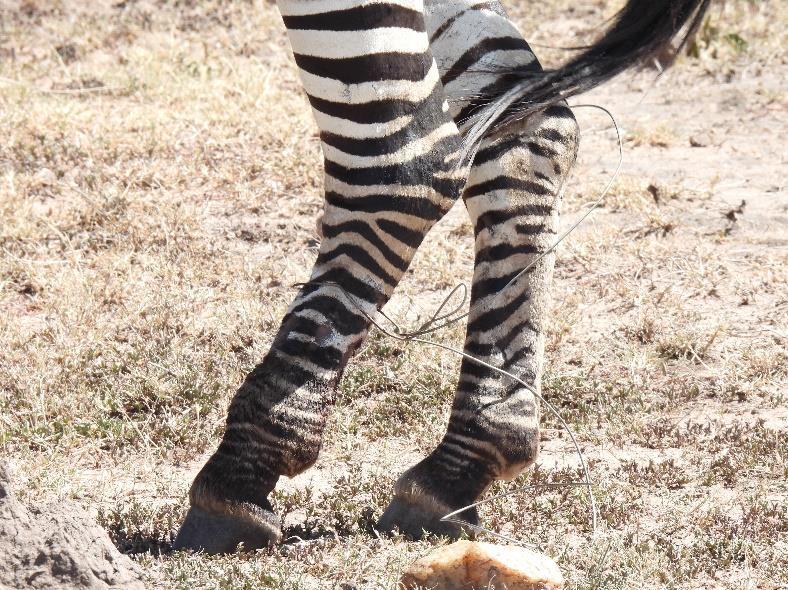

The zebra was darted on left rump with 6 mgs Etorphine and 70 mgs Azaperone. It went down on left lateral recumbency when the drugs took effect. The animal was blindfolded to minimize visual arousal and to protect its eyes from dust and direct sunlight. The wire was loosened and taken off the limbs then the friction wounds were disinfected with Hydrogen Peroxide and Iodine and sprayed with Tetracycline. 5,000 mgs Tetracycline, 30 mgs Dexamethasone and 15 ml Cyanocobalamin were injected intramuscularly before anaesthesia was reversed with 18 mgs Diprenorphine injected into jugular vein. The zebra stood up 2 minutes post-reversal and trotted away.

The zebra has a good prognosis.

This adult male elephant with a swollen left forelimb was seen by Mara Elephant Project rangers during a routine monitoring patrol.
The team was directed to where the elephant was by locals after searching for the animal for several hours. The elephant was darted with 18 mg Etorphine, it moved towards a denser patch of forest when the dart landed. Full sedation was achieved with the elephant leaning against a giant Olive tree. The vet decided to proceed with treatment under close anaesthesia monitoring while the elephant was in this position since its respiratory system was not compromised. A wound was observed on the medial side of the forelimb. The wound was cleaned with Hydrogen peroxide and Iodine and covered with Tetracycline wound spray. 20,000 mgs Tetracycline and 100 mgs Dexamethasone were administered then anaesthesia was reversed with 40 mgs Naltrexone and 48 mgs Diprenorphine injected into the ear vein. The elephant stood 3 minutes later.
The elephant has a good prognosis, it is expected to recover fully within a very short time. Rangers were asked to monitor the elephant for possible review after a week if there isn’t marked improvement.
This adult male giraffe was spotted by rangers who noted that it was reluctant to move as they drew closer towards it, they soon discovered that the giraffe had a spear lodged in its right paravertebral fossa.
The giraffe was found alone, it did not want to move probably due to the pain it was experiencing. It was darted with 16 mgs Etorphine and 25 mgs Azaperone which took effect 3 minutes post-darting. The giraffe was roped down, blindfolded and physically restrained by pinning the head down. Anaesthesia was then reversed with 48 mgs Diprenorphine injected into jugular vein. The spear was removed then the penetrating wound was disinfected with Hydrogen peroxide and Iodine, packed with wet green clay and covered with Tetracycline wound spray. 15,000 mgs Tetracycline was injected into 2 different muscle sites along with 40 mgs Dexamethasone and Multivitamins. The giraffe was thereafter released, it stood up energetically and moved, with a noticeable improvement in posture, to join the nearby tower of giraffes

The giraffe has a fair prognosis.
Mara Elephant Project rangers spotted this sub-adult female elephant with a swollen left forelimb, it was reported that the elephant had been treated at an earlier date for a tight wire snare on the same limb.

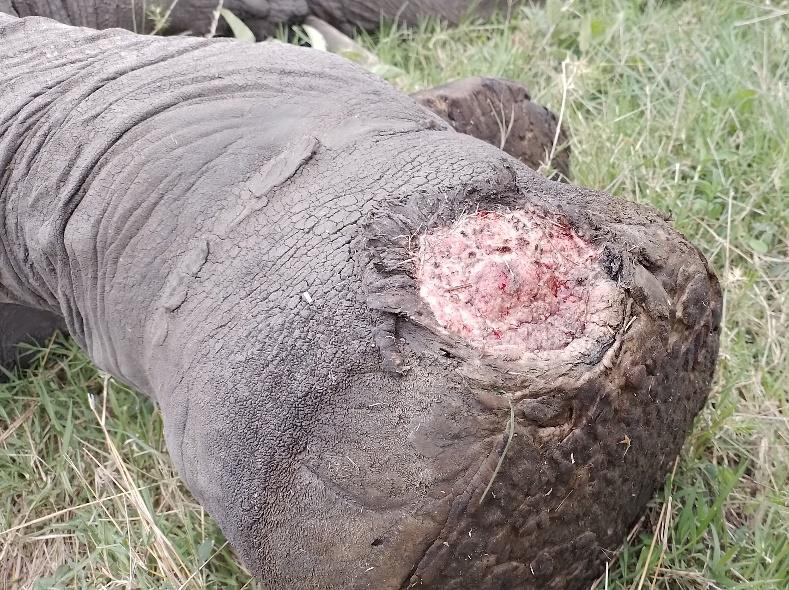
The elephant was found grazing alone. It had a severely swollen forelimb; a traumatic wound was observed on the lateral side of the foot. The elephant was dared from a vehicle with 10 mgs Etorphine, it went down on right lateral recumbency once the drugs took effect. The wound was cleaned thoroughly with Hydrogen peroxide and Iodine and covered with Tetracycline wound spray. 15,000 mgs Amoxicillin, 20 mgs Dexamethasone and Multivitamin were administered intramuscularly then anaesthesia was reversed with 30 mgs Diprenorphine injected into the ear vein. The elephant stood up 5 minutes later and walked away
The vet gave this elephant a fair prognosis for full recovery since the location of the wound makes it prone to infection.